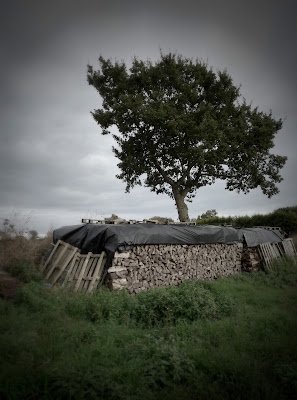We didn't grow any pumpkins this year, and I didn't think to seek one out for Halloween, or to do much to mark it at all, it's very much an optional feast here.
Then J turned up with a massive tranche of one, grown by their friends H and H in Ile-et-Vilaine, when they came round the other night.
I meant to take a picture of it next to Molly, to give a sense of scale; it's about as big as she is.
It looks a little watery and insipid, as mega-veg like this often are. But it's a handsome brute anyway.
I think what I'll do is, bake it in the oven underneath tonights pintade - guinea fowl - along with the chestnuts I've been finding in my pockets, and plenty of things that do taste of something: onions, garlic, herbs some sun-dried tomatoes in oil I've got in a jar... oh and not forgetting a stock cube or two! It's a trick that works well with all manner of rather bland vegetables.
So that's Halloween sorted out.
~~~
And tomorrow begins Nablopomo, when one can blog every day, legitimised by custom, without worrying about imposing unduly on one's gentle readers' patience. I'm quite up for it this year, I think, though whether my internet connection will be is another matter. Last year Tom was in hospital and the phone lines went down and my resolve to blog daily quickly did likewise.
Happy All Souls, see you on All Saints!


















































